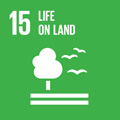- Docente: Annalisa Tassoni
- Credits: 6
- SSD: BIO/01
- Language: Italian
- Teaching Mode: Traditional lectures
- Campus: Bologna
- Corso: First cycle degree programme (L) in Natural Sciences (cod. 8016)
Learning outcomes
This course aims to give to the student the basic knowledge about plant cytology, histology and organography and some basic knowledge of plant physiology. In particular, the student will be able to recognise cytological and anatomical structures and plant morphology.
Course contents
Cytology - Life origins. Prokaryotic and eukaryotic organisms. Cell structure of prokaryotics. Eubacteria and cyanobacteria. Cell structure of eukaryotic organisms. The plant cell. Plant cell wall chemical structure (cellulose, hemicellulose, pectic substances and glycoproteins). Primary and secondary cell wall; modifications of the secondary cell wall. Primary and secondary metabolism. Vacuole: structure, formation, differentiation and functions. Plastids. Chloroplast structure. Chemical structure and functions of starch. Leucoplasts and chromoplasts. Theories on the origin of plastids.
Morphological organization of plants - Outline of sistematics in plants
Histology – Primary and secondary meristems. Parenchyma. Epidermal tissues (stomata and tricomes). Mechanical tissues (collenchyma and schlerenchyma). Transport tissues (xylem and phloem). Secretory cells and tissues. Vascular bundles
Anatomy – Morphology and anatomy of the stem, root and leaf and their morphological modifications. Primary and secondary structures. Structure of wood. Structure of Spermatophytes (Gymosperm and Angiosperm both Monocots and Dicots). Flower, fruit and plant reproduction.
Elements of Plant Physiology - Photoautotrophy and chemioautotrophy. Autotrophy and heretrotrophy: symbiosis and parasitism. Photosynthesis: pigments, light and dark phase. C3, C4 and CAM plants. Photorespiration. Nitrogen metabolism and cycle. Mineral nutrition. Plant hormones: auxins, cytokinins, gibberellins, abscissic acid, ethylene, brassinosteroids, jasmonates, polyamines.
Readings/Bibliography
Botanica. I parte. Mauseth. Idelson-Gnocchi
Speranza A., Calzoni G.L. Struttura delle piante in immagini, Zanichelli, 1996
Teaching methods
Lectures and practicals with the use of microscope.
See teacher web site for practicals calendar and details.
Assessment methods
Written text with multichoice questions followed by oral exam with questions on the entire programme and identification of plant structures from projected slides.
Teaching tools
Videoprojector, PC, microscopes
Office hours
See the website of Annalisa Tassoni
SDGs

This teaching activity contributes to the achievement of the Sustainable Development Goals of the UN 2030 Agenda.
